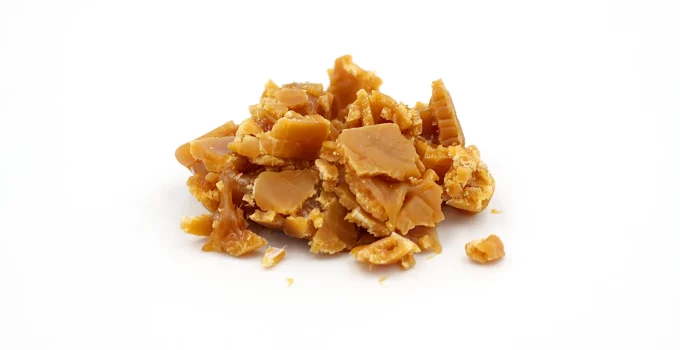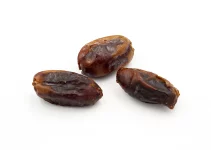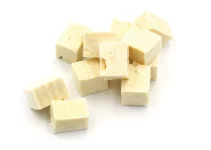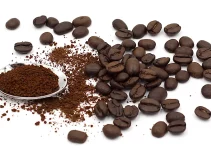If you have been able to find absolutely every ingredient for a recipe with the exception of caramel extract, don’t give up on making the recipe yet because you can use a substitute for caramel extract instead.
What is so awesome about caramel extract?
First of all, it’s that rich, sweet flavor. It’s dark brown in color and it has a concentrated burnt sugar flavor with hints of vanilla and cream. Moreover, it’s actually one of the ingredients that eliminates a lot of work.
For most recipes of cakes and cookies, you only need one teaspoon for creating delicious flavors.
The awesome thing is that extracts are not overpowering so they make flavors blend rather than stand out. The same thing cannot be said about oils, especially if you use more than a few drops.
Caramel extract is very versatile.
It can be used for making cakes, cookies, puddings, ice cream, frostings, cinnamon rolls, butter cream, as a fruit dip, and in drinks.
But it also contains alcohol so you should keep that in mind. All extracts contain alcohol, that’s how they’re made and the flavor is concentrated. Check out my recommendation for coffee extract substitutes if you want.
Table of Contents
13 Best Substitutes for Caramel Extract
Is there a perfect caramel extract substitute? I’m afraid this is one of those cases where my answer is going to be no.
There are plenty of replacements and you can read about each of them and see which would work best for your recipe.
1. Caramel flavor
What is caramel flavor? We could say that it’s something like caramel extract without being named that way.
The important thing about a product that’s called caramel flavor or imitation caramel is that we get the flavor our recipe calls for.
That’s why I believe that caramel flavor/imitation caramel can be a perfect substitute for caramel extract if you can find a bottle to buy.
The general ingredients are: water, sugar, alcohol, natural flavors.
The problem is that if you don’t want alcohol in your recipes, this will not be a good substitute.
Nevertheless, as you’re going to discover when I later talk about how to make your own caramel extract, the recipe is made with alcohol.
Thus, caramel extract and caramel flavor have a lot of things in common: both are used for their caramel taste, both can be used interchangeable in a 1:1 substitution, both work for all kinds of recipe that call for caramel extract, and they both have alcohol as an ingredient.
2. Caramel flavor with no alcohol
There’s also a solution who want to find an easy-to-use substitute for caramel extract that contains no alcohol.
There are certain caramel flavor options that are made alcohol-free.
In the case of those, the ingredients might be: propylene glycol, natural and artificial flavors, water.
This non-alcoholic caramel flavor can be used in the same way as you would use the extract.
It’s a 1:1 substitution. The taste is just as good as what we get when we make our recipes with extract.
3. Caramel bakery emulsion
This is another product that will work wonderfully as a caramel extract.
It can be used in a 1:1 substitution so that makes it even better.
1 teaspoon extract = 1 teaspoon emulsion
The emulsion has the following ingredients: propylene glycol, water, inverted sugar, natural and artificial flavors, alcohol, xanthan gum.
Once again, alcohol is an ingredient.
It is water-based.
The caramel bakery emulsion can be used in coffees, in baked goods, frostings, and every other recipe that calls for caramel extract.
It’s a delicious substitute that will bring the burnt sugar flavor with hints of vanilla and cream to your recipes.
This is the kind of caramel flavoring that you’re looking for, as long as you can find a bottle to buy where you live.
That’s its only downfall, it’s not easy to find. Which is why I would recommend trying to make your own extract at home if you have the time.
4. Caramel essence
The essence is oil-based so that should tell you that it has a more powerful flavor.
If you’re using caramel essence as a substitute for caramel extract, use only a few drops to flavor your desserts.
Don’t make a 1:1 substitution because it will overpower all the other flavors.
It’s perfect for baking and can be used in all the desserts that call for caramel extract.
However, as I said the essence is oil based so it won’t mix with water. That means that it won’t work as a substitute in drinks.
If you get a high quality essence it will work perfectly in desserts and it won’t overpower the rest of the ingredients.
They will just taste more caramelly, which is perfect for desserts with chocolate, nuts, and so much more.
There are instructions that should come with any essence.
Usually, 6 drops are the equivalent to a teaspoon of fresh ingredient.
5. Caramel syrup
The thing with caramel syrup is that it’s more liquid than the extract.
You’ll have to be careful when adding it to a recipe so that it doesn’t become too wet, which can be a problem with some desserts.
Since it’s more liquid, you’ll have to be careful with how much you can add so that you won’t ruin the balance of the recipe.
That’s the main reason why I’m not particularly joyous about this substitute when it comes to making desserts where measurements are fixed and deviations have an impact.
It’s much easier when it comes to replacing the extract with the syrup in drinks. They’re liquids and you can taste until you find the right balance of flavors.
Plus, with the syrup you will get the sweetness but not that deep flavor that the extract offers.
I find caramel extract to be much more rich in flavor, with those additional hints of vanilla and cream, than the syrup.
6. Caramel sauce
We can’t talk about finding a substitute for caramel extract without talking about the thing most people are most familiar with: caramel sauce.
However, it wouldn’t be my first recommendation as a substitute for one reason only: it’s a lot thicker than the extract.
If this is your only option, in most cases you’ll have to add water to it to make it less thick and gloppy.
If you make your own caramel sauce, I recommend adding 3 tablespoons of water instead of 2 tablespoons.
However, if you buy caramel sauce instead of making it at home, you will find that it has a more liquid consistency.
Since we’re on the topic of caramel sauce, I would also like to quickly tell you how to do it. You could also watch a YouTube video to better understand how it’s made in case you have no experience with it.
How to make caramel sauce
In order to make caramel sauce you only need 4 ingredients: brown/white sugar, water, butter and cream.
The quantities are: 1/3 cup sugar, 2 tablespoons water, 1/4 cup unsalted butter, 1/4 cup heavy cream.
However, you can add 3 tablespoons of water instead of 2 tablespoons if you plan on using the caramel sauce as a substitute for caramel extract.
I prefer using brown sugar but you can use white sugar instead.
Some people consider that only white sugar is true caramel and that brown sugar is butterscotch. Well, I use brown sugar for most of my recipes. I just prefer that deeper, more complex flavor.
Stir the sugar and water together in a small saucepan.
Set the pan over medium heat and bring the mixture to a boil, while you continue swirling the pan occasionally.
Cook it until it is a deep amber and you see the first wisps of smoke.
That will take about 5 minutes.
Once you turn off the heat, you can add the other 2 ingredients, butter and cream. Whisk until smooth.
I’m not going to go into the method that requires a thermometer because there are plenty of people who don’t have one on hand.
7. Caramel liqueur
If you’re trying to make an alcoholic beverage that mentions caramel extract, then you could use caramel liqueur instead.
There are actually caramel extracts that have been developed for use in beer, cider, wine and spirits.
Caramel liqueur is the best substitute in this case because it has rich and creamy smooth notes of delicious caramel.
It can also be served neat over ice.
When it comes to making alcoholic beverages or spiking up an espresso, the liqueur definitely holds more versatility than the extract.
Caramel vodka might become a new preference if you want to experiment a bit.
8. Caramel candy
What can you do with caramel candy?
You can buy caramels and melt them.
You can melt as little as 10 caramels, it depends on the ingredients needed for the recipe.
Unwrap them, add them in a pan with 2 tablespoons of water and cook the caramels over medium-low heat for 10-15 minutes.
You can also use 2 tablespoons of milk or heavy cream. That will prevent the melted caramels from turning back into candy.
The thing with this melted substitute is that it can recrystallize quite quickly and then you’ll be back to the candy form.
So, melt the caramels just before you need to add it to the recipe. Well, when you needed to add the caramel extract to the recipe but now you’ll be using melted caramels instead.
If you want to keep the caramels soft, you can use milk or heavy cream, instead of water.
9. Vanilla extract
You can use vanilla extract as a substitute for caramel extract but if the recipe already includes the use of vanilla extract there’s pretty much no point in using this substitute.
Adding vanilla extract on top of vanilla extract will get you nowhere.
Thus, it’s pretty limited in use when it comes to substitutions.
On the other hand, if you’re a person who’s not a big fan of vanilla extract in any recipe, then you can definitely turn to using caramel extract instead.
Caramel extract is a great vanilla extract substitute, much more than the other way around. Now you can easily bake a cake without vanilla extract.
10. Instant espresso powder
This one can be quite overlooked by bakers but I definitely recommend it as a fantastic ingredient if you’re making chocolate treats.
It pairs very well with chocolate and it will make it taste more chocolatey.
You can make a caramel sauce to cover the cake with or drizzle it over the dessert. Or maybe use it as a dip if you still want to incorporate the caramel into the recipe somehow.
11. Almond extract
This one is very powerful. Almond extract has a strong flavor profile and it won’t work for those who can’t stand almonds.
I would recommend using just half almond extract than the recipe indicates for caramel extract, it’s that powerful.
You must love the nutty taste if you’re going to use this one as a substitute for caramel extract.
12. Butterscotch flavor
If we want to go taking in technical terms, we would say that caramel is made with granulated sugar while butterscotch is made with brown sugar.
However, I like my brown sugar very much so I pretty much do my caramel sauce with brown sugar anyway. I still call it caramel sauce and not butterscotch sauce or whatever.
Thus, if you find a bottle that says butterscotch flavor, you can be confident that you can use it as a substitute for caramel extract.
If it says super strength on the bottle, then you should know that you should use less of the flavor.
When substituting super strength flavors for extracts, use ¼ to ½ teaspoon for 1 teaspoon of extract.
Thus, use half or even less of that to substitute super strength flavor for extract.
But, what truly matters, is that we get the the taste of butter, brown sugar, and vanilla.
I just mentioned it last because I really am not sure that many people will come across butterscotch flavor. It’s not an ingredient you come across everywhere you go.
13. How to make your own caramel extract
This website will teach you how to make any extract you want but for now let’s focus on what interests us.
If you’ve ever made vanilla extract at home, which I totally recommend, you will know the basics and what the process entails.
First of all, you need alcohol.
I recommend buying a non-flavored vodka. It’s the best option and you don’t need to go for the expensive bottle since it’s only used for extracting the flavor that you need. You won’t taste the alcohol at all once the thing is done.
Caramels/caramel candies are the second ingredient you need.
Place the caramels in a jar with a tight seal. Cover them with 3 times the amount of alcohol.
The mixture should be placed for 5-6 weeks in a dark place, out of sunlight.
Shake the mix once a week.
Strain the mix using a cheesecloth into a dark bottle, preferably. Store the bottle in a cupboard, away from light and heat, tightly sealed. If you make your own, you won’t need a substitute for caramel extract ever again.




